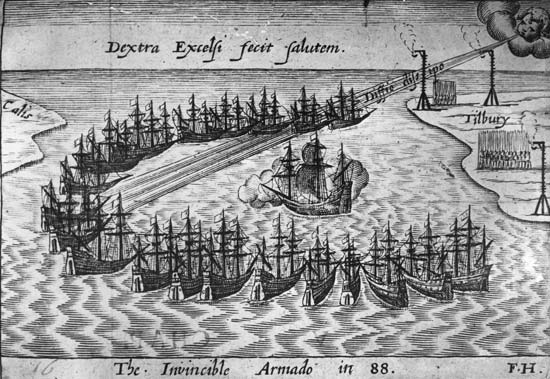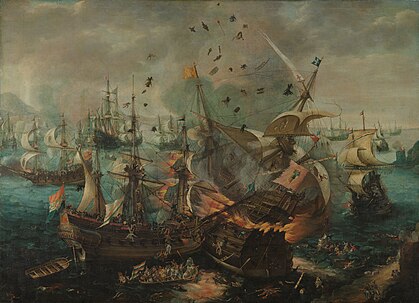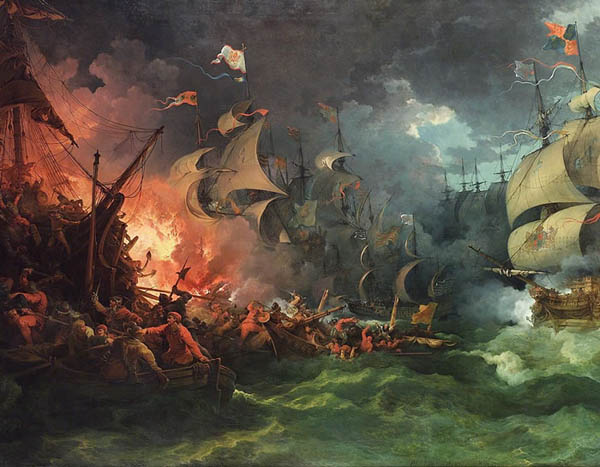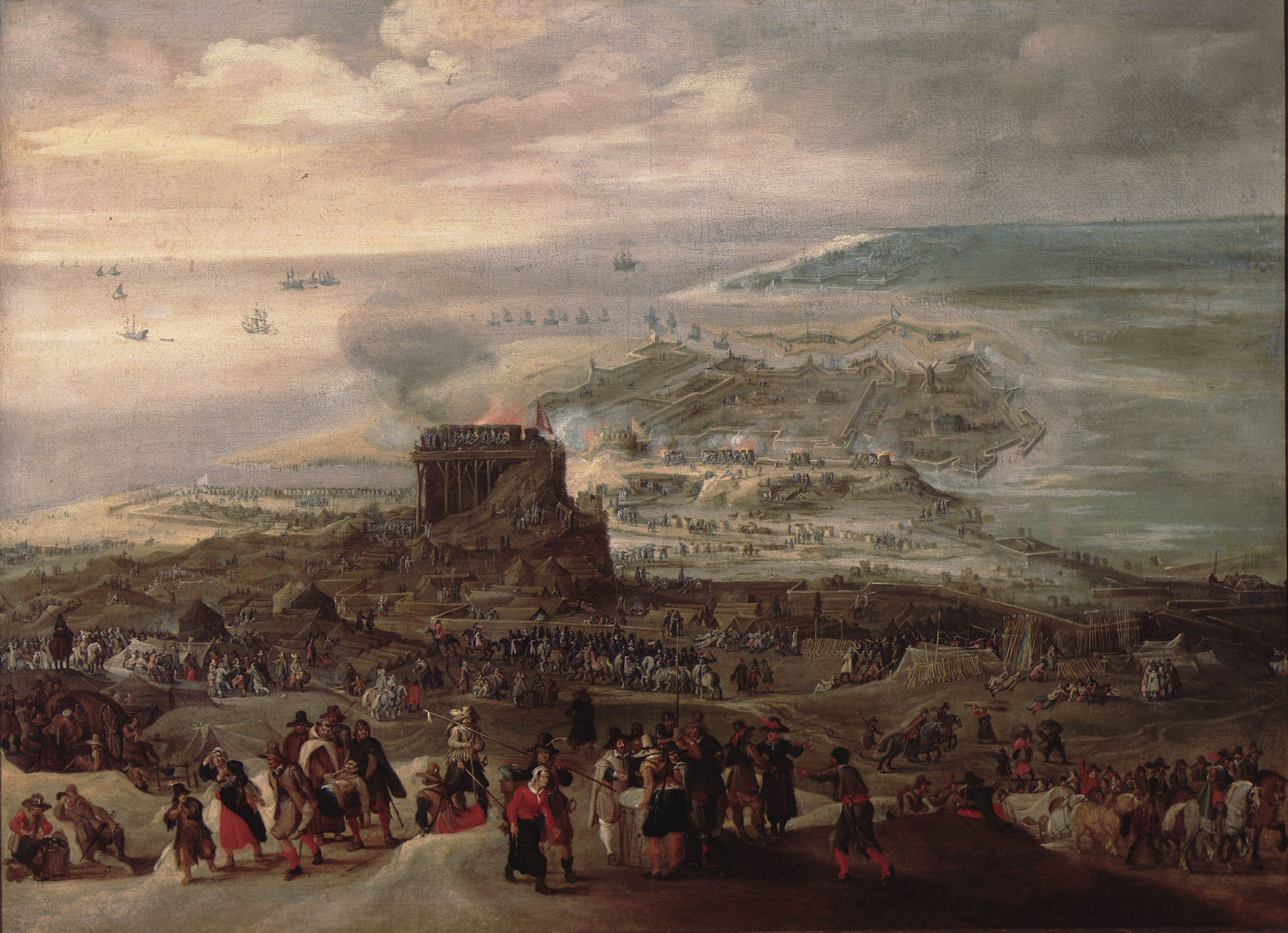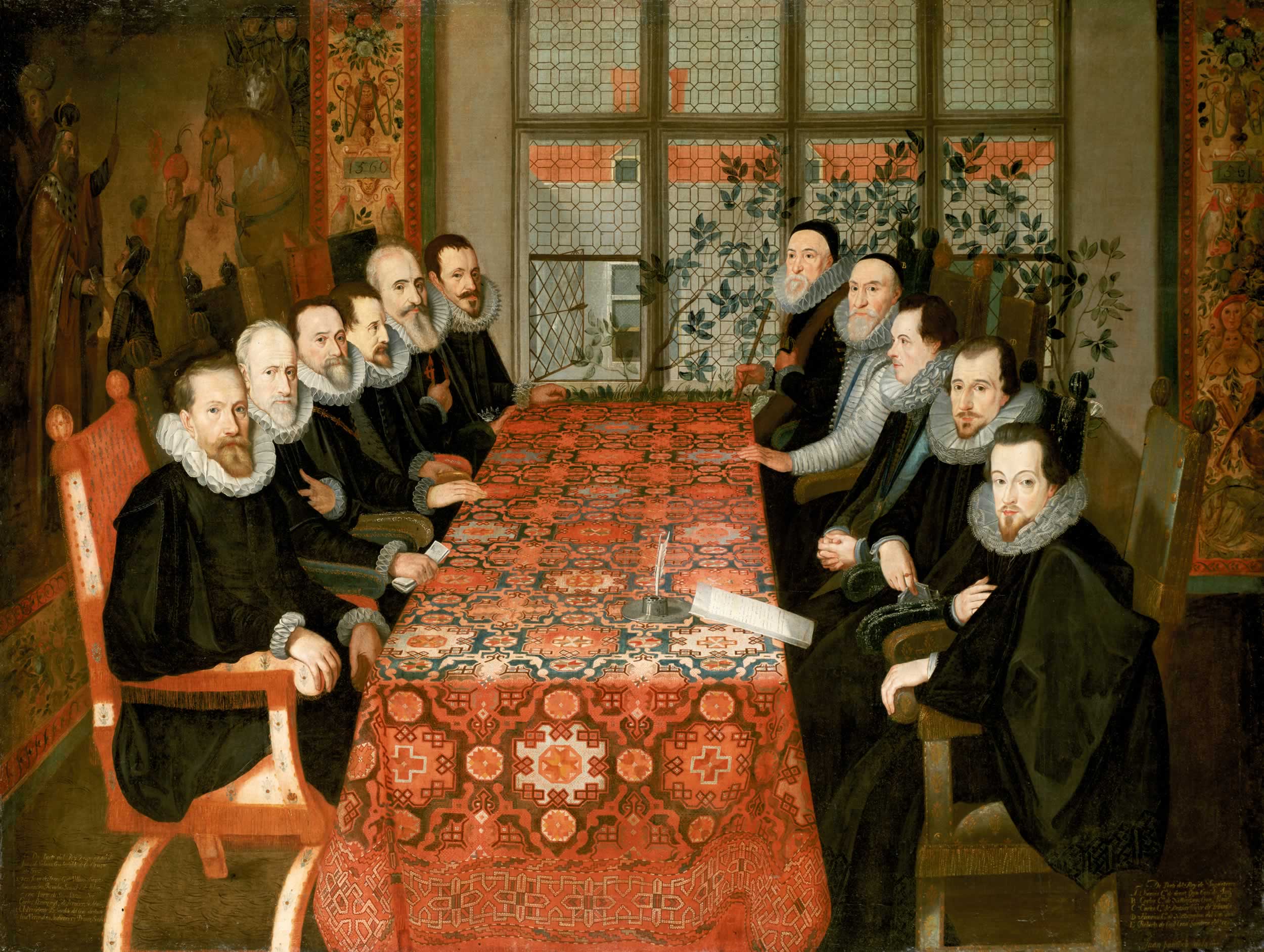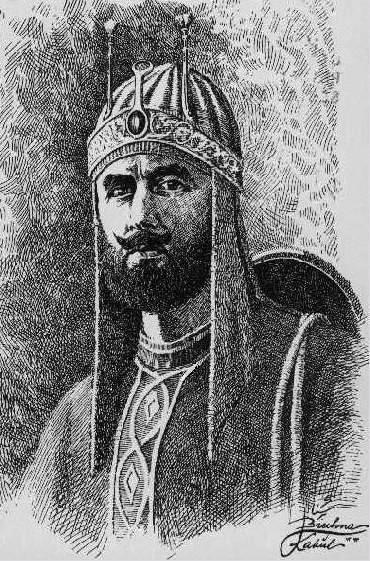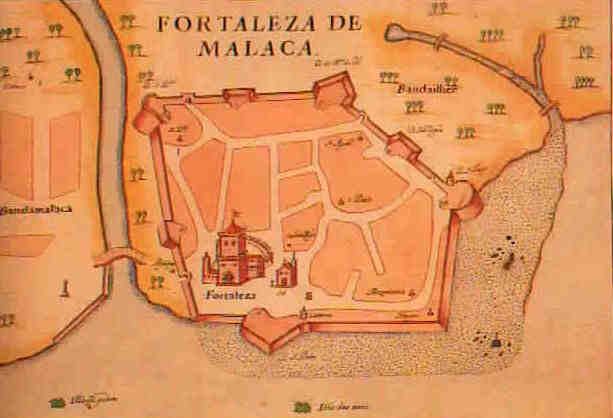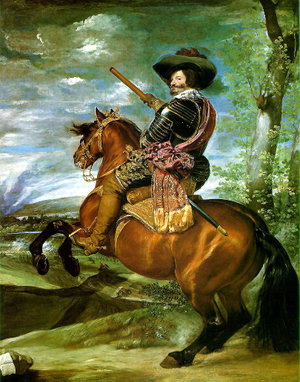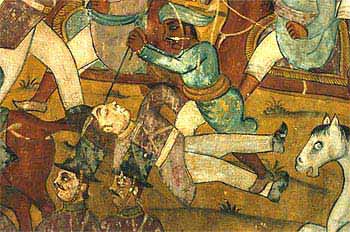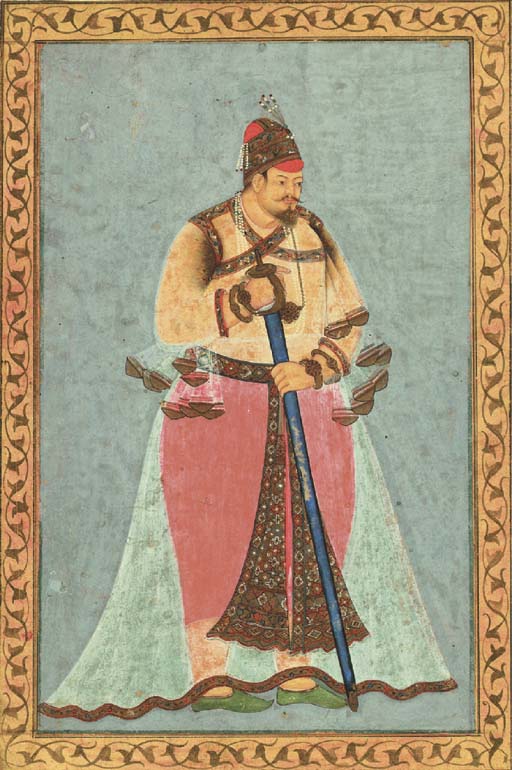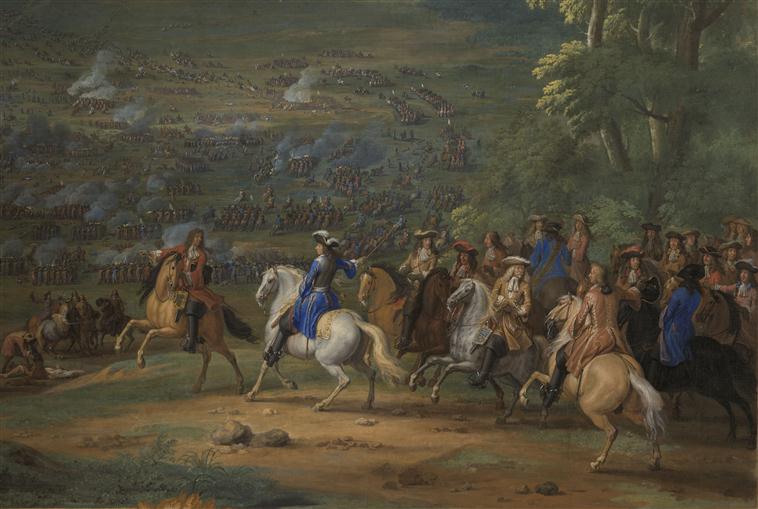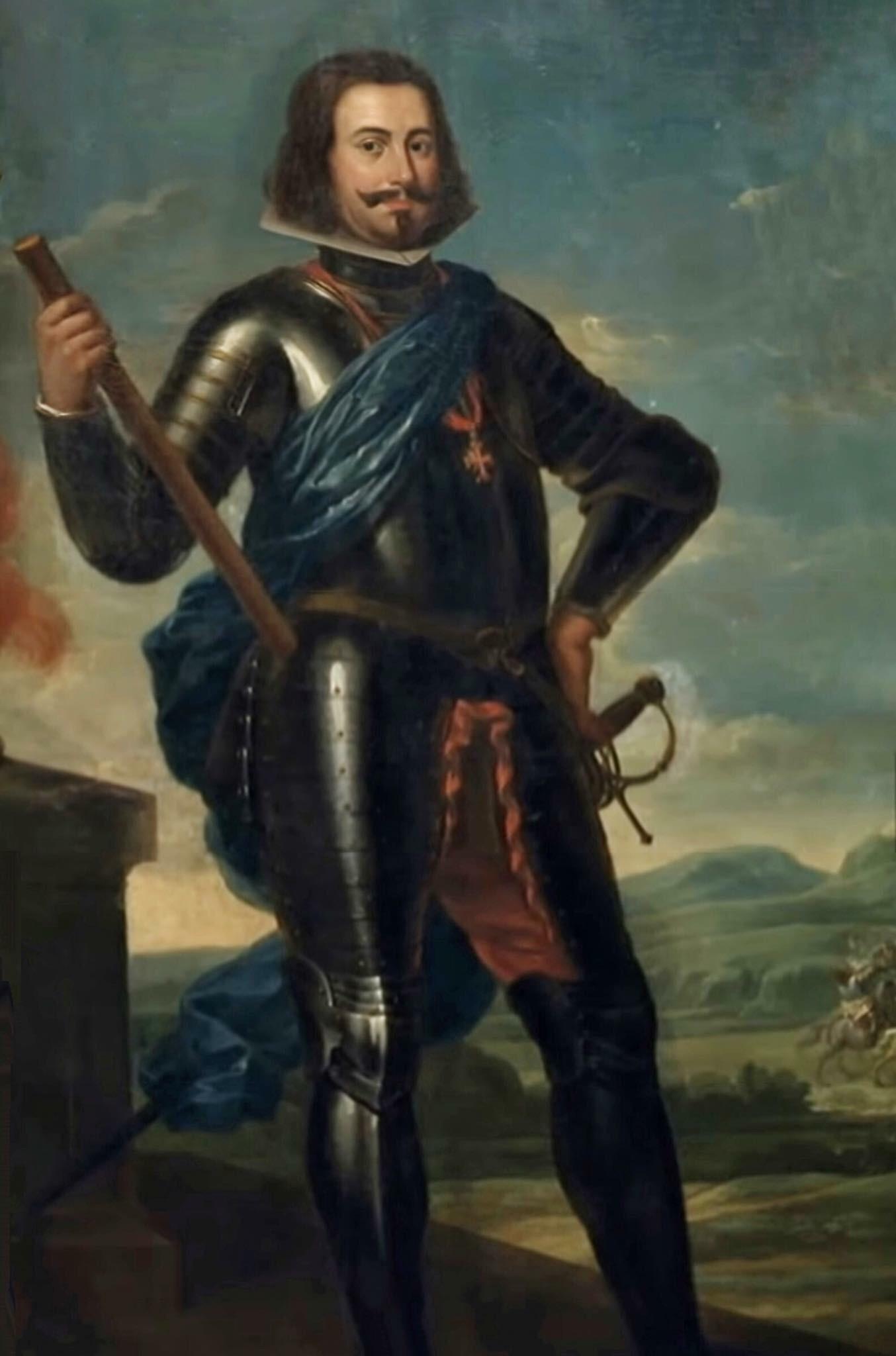This is my first timeline so it is likely to have errors in it. As stated by the idea's thread this timeline is to find and raise 6 nations to world powers in a plausibly way here are the 6 Portugal,Indonesian Conferedecy,Greece, Scandinavia (Sweden dominated),Syria-Iraq, Vijayanagara. As this is my first timeline please don't try to rip it apart I am doing this for fun but I am willing to take suggestions. Please Comment.
The coup and the Iberian front of the 20-year war.
“The rising star of Portugal shall never fade” King Jorge 1st at the battle of Serpa
The rise of the House Salazar is synomonius with the beginning of the Golden age of Portuguese culture. A Golden Age that would have far reaching consequences across this world. Yet this Age did not begin peaceful it began in the Sinews of War. After the disastrous battle of Alcarquivir, Portugal was thrown into chaos as three nobles tried to claim the throne of Portugal. The Duchess of Braganza Catarina, Antonio the Prior of Crato, and the King of Spain Phillip. The Duchess crowned herself Queen of Portugal making The Duke of Parma her King. It is during this time a lowly Captain of the Lisbon forces began to fabricate a plot. His name was Jorge Antonio Salazar
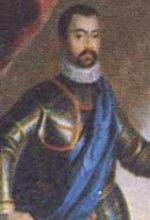
King Jorge the Great
Jorge Salazar was a minor noble who joined the army at a Young age. He came from a modest estate outside the city of Lisbon. He followed his family tradition and joined the army as a modest lieutenant. His was reassigned just before the invasion of Portugal to become the new head of the city guard. His father was killed at Alcarquivir making him the lord of his estate. He would blame the House Braganza for his Fathers death. His plan for the coup was to march a force 50 in to throne room and arrest the King and Queen his Son Antonio would lead the rest of the Guard to arrest the Prior, while finally his best friend Joaquin would arrest the nobles not loyal to him.
The plan work almost flawlessly. Jorge arrested and exiled the Duke of Parma, and forcing the Duchess to marry him to legitimize his claim though had her children either exiled or murdered. The nobles not loyal to the new regime were executed for treason. But the plan had one crucial flaw. The plan relied heavily on the reaction (or lack of reaction) of Philip. Phillip’s reaction was the exact opposite of what Jorge wanted. Phillip immediately raised army and began to march straight to Lisbon to avenge his family. Jorge needed a miracle to save his position. It came in the form of his brilliant friend Joaquin the new Duke of Braganza. Joaquin did two things that modern historians deem saved the Portuguese from an absolute defeat in the war. First Joaquin raise a large army in only 20 days comprised of conscripts, mercenaries, the second more importantly was enacted a ancient treaty with England bringing them into the war. Phillip’s army marched directly to Lisbon but was met by the Portuguese army under the command of King Jorge himself and Joaquin de Braganza at the town of Serpa. The Battle of Serpa would mark the beginning of the 20 year or as the Portuguese know it as the Portuguese war of independence.
The battle of Serpa is one of the most important for the time and the war. A Spanish force 60 000 under the command of General Pedro de Zubiaur, and General Juan del Aguila. Jorge marched his newly recruited army of 30 000 fresh, mercenaries, conscripts to the town of Serpa. Jorge reached the town before Spanish forces and set up camp on a small hill. Spanish arrived the next morning. General de Zubiaur launched a frontal assault on the enemy position while General del Aguila lead a second force to surround and flank Jorge. What makes the Battle of Serpa unique from other battles is the battle plan of Jorge. The battle began with a full frontal pike and infantry assault to the hilltop. The Portuguese easily repulsed this. De Zubiaur personally led a second assault on the hill. It was at this time that del Aguila army appeared to the south of the Portuguese army. Unlike other commanders whose army would be wiped out by such a force Jorge launched a risky full frontal assault on de Zubiaur army committing all troops. The Portuguese lines were about to collapse when de Zubiaur fled for his life after surviving a cannon ball. The Spanish lines shattered and routed. Jorge then struck quickly against del Aguila force. Del Aguila is killed in the fighting and hid forces rout. It would be one of King Jorge greatest victory
http://upload.wikimedia.org/wikipedia/commons/d/d1/Ivryrubens.jpg
The Battle of Serpa
Jorge immediately began planning a full-scale invasion of Spain. He put in place a mass recruitment from the cities and country to fill the ranks. By June 2nd 1581 the forces were ready for battle. Portugal launched a three-pronged invasion of the Spanish mainland Jorge would take a force of 30 000 to march straight to the capital, Joaquin would invade the south a take the key port cities, and his son Antonio would invade the northern areas and meet up with a British force under the command of Lord Mountijoy.
The central force hit hard and fast taking the city of Salamanca and marching to Toledo to destroy the last remnants of the army. In the south things was not going well General de Zubiaur was putting up a fierce resistance fighting the Portuguese at Badajoz, and Seville losing both. When Joaquin arrived a Cadiz he was met with a force 40 000 Spanish soldiers and sailors. The first battle of Cadiz marked the first Spanish victory in the war. After the defeat Joaquin retreated back to the city of Huelva were the navy was waiting. Spanish navy followed the retreat to the city. The naval battle of Huelva was a vicious and fierce battle between war hero Alvaro de Bazan of Portugal commanding a force of 75 ships against the Spanish armada of 86 ships under Medina Sidonia. The battle was a decisive victory for Spanish. The Portuguese navy retreated back to Portugal the Armada cut off all supplies to the city as General de Zubiaur surrounded the city beginning the siege of Huelva. In the north things were going fine much of the northern areas were taken defeating Spanish at La coruna and Leon and were days away from meeting the English forces at Gijon.
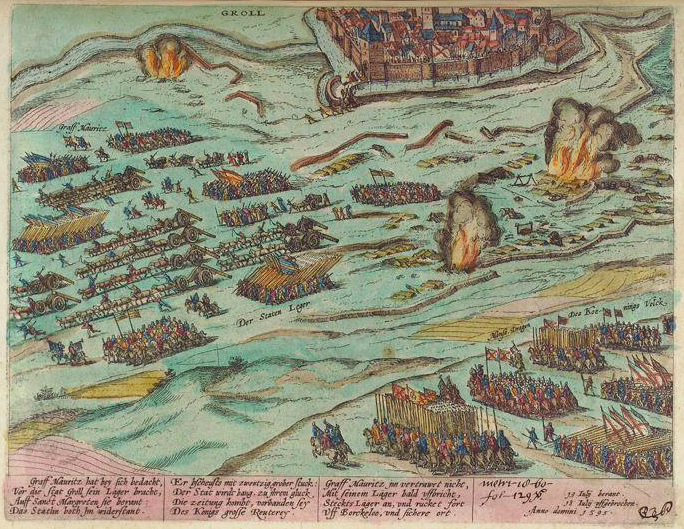
The Siege of Salamanca
The year of 1581 marked the farthest advance of Portuguese forces in Spain. On February 16th 1582 Jorge meet the Spanish forces at the city of Toledo. It is a crushing victory for Spanish. Phillip him self lead a stunning strike on Jorge flank. The line broke and the Portuguese retreated. Phillip followed them all the way to the city of Salamanca. He laid siege to the city.
Dutch Rebellion and Naval War
“ I have never seen men fight a bravely as the Dutch” Robert Dudley
Spain was not the only front in the 20-year war. The Low Countries was in revolt. Lead by the brilliant William the silent. William had been fighting the Spanish for a long time. When the war sparked he hired an army of mercenaries marched into the Netherlands. They were soon meet by the British general and favorite of Elizabeth, Robert Dudley. Together they marched, liberating Holland, winning at the battles of Arnhem and Grun. They marched into the city of Amsterdam as heroes and liberators. They meet the main Spanish force at Breda. The battle was mostly a pyrrhic victory for the Dutch but in the long term it was a Spanish victory. The battle of Breda created confusion amongst the Dutch army, which split in three. The English went and took the town of Middelberg believing that the army split up to achieve different goals. William took a third of the army to the town of Utrecht to regroup. The final parts of the army advance to Antwerp were they by the Spanish besieged them. Though William and Dudley were able to regroup they were never able to save the army at Antwerp.
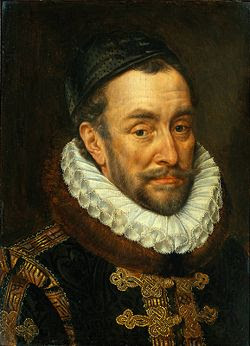
William the Silent
The naval war progressed slowly after the battle of Huelva. When the Spanish caught word of that the British and what was left of Portugal’s fleet were meeting at the town of La Coruna. The majority of the fleet went to fight the allied fleet there, while leaving a skeletal force at the siege. It was here that famous Privateer Francis Drake launched his famous raid of Huelva. With only a few ships he destroyed the fleet at the city, and therefore allowed for supplies to get in the city. The siege was broken days later. As for the battle of La Coruna it was a victory for the Spanish but the destruction of the much of fleet occurred leading Philip to immediately start to create the Grand Armada.
With the war reaching a stalemate both sides meet in Barcelona ending the first part of war with a ceasefire. The ceasefire was meant to end the war but for convince history combined the wars together. The ceasefire recognized Jorge dynasty but called for the withdrawal of all troops from the troops from Spain. Both sides knew war would come at a later date but for now peace was at hand.
The coup and the Iberian front of the 20-year war.
“The rising star of Portugal shall never fade” King Jorge 1st at the battle of Serpa
The rise of the House Salazar is synomonius with the beginning of the Golden age of Portuguese culture. A Golden Age that would have far reaching consequences across this world. Yet this Age did not begin peaceful it began in the Sinews of War. After the disastrous battle of Alcarquivir, Portugal was thrown into chaos as three nobles tried to claim the throne of Portugal. The Duchess of Braganza Catarina, Antonio the Prior of Crato, and the King of Spain Phillip. The Duchess crowned herself Queen of Portugal making The Duke of Parma her King. It is during this time a lowly Captain of the Lisbon forces began to fabricate a plot. His name was Jorge Antonio Salazar

King Jorge the Great
Jorge Salazar was a minor noble who joined the army at a Young age. He came from a modest estate outside the city of Lisbon. He followed his family tradition and joined the army as a modest lieutenant. His was reassigned just before the invasion of Portugal to become the new head of the city guard. His father was killed at Alcarquivir making him the lord of his estate. He would blame the House Braganza for his Fathers death. His plan for the coup was to march a force 50 in to throne room and arrest the King and Queen his Son Antonio would lead the rest of the Guard to arrest the Prior, while finally his best friend Joaquin would arrest the nobles not loyal to him.
The plan work almost flawlessly. Jorge arrested and exiled the Duke of Parma, and forcing the Duchess to marry him to legitimize his claim though had her children either exiled or murdered. The nobles not loyal to the new regime were executed for treason. But the plan had one crucial flaw. The plan relied heavily on the reaction (or lack of reaction) of Philip. Phillip’s reaction was the exact opposite of what Jorge wanted. Phillip immediately raised army and began to march straight to Lisbon to avenge his family. Jorge needed a miracle to save his position. It came in the form of his brilliant friend Joaquin the new Duke of Braganza. Joaquin did two things that modern historians deem saved the Portuguese from an absolute defeat in the war. First Joaquin raise a large army in only 20 days comprised of conscripts, mercenaries, the second more importantly was enacted a ancient treaty with England bringing them into the war. Phillip’s army marched directly to Lisbon but was met by the Portuguese army under the command of King Jorge himself and Joaquin de Braganza at the town of Serpa. The Battle of Serpa would mark the beginning of the 20 year or as the Portuguese know it as the Portuguese war of independence.
The battle of Serpa is one of the most important for the time and the war. A Spanish force 60 000 under the command of General Pedro de Zubiaur, and General Juan del Aguila. Jorge marched his newly recruited army of 30 000 fresh, mercenaries, conscripts to the town of Serpa. Jorge reached the town before Spanish forces and set up camp on a small hill. Spanish arrived the next morning. General de Zubiaur launched a frontal assault on the enemy position while General del Aguila lead a second force to surround and flank Jorge. What makes the Battle of Serpa unique from other battles is the battle plan of Jorge. The battle began with a full frontal pike and infantry assault to the hilltop. The Portuguese easily repulsed this. De Zubiaur personally led a second assault on the hill. It was at this time that del Aguila army appeared to the south of the Portuguese army. Unlike other commanders whose army would be wiped out by such a force Jorge launched a risky full frontal assault on de Zubiaur army committing all troops. The Portuguese lines were about to collapse when de Zubiaur fled for his life after surviving a cannon ball. The Spanish lines shattered and routed. Jorge then struck quickly against del Aguila force. Del Aguila is killed in the fighting and hid forces rout. It would be one of King Jorge greatest victory
http://upload.wikimedia.org/wikipedia/commons/d/d1/Ivryrubens.jpg
The Battle of Serpa
Jorge immediately began planning a full-scale invasion of Spain. He put in place a mass recruitment from the cities and country to fill the ranks. By June 2nd 1581 the forces were ready for battle. Portugal launched a three-pronged invasion of the Spanish mainland Jorge would take a force of 30 000 to march straight to the capital, Joaquin would invade the south a take the key port cities, and his son Antonio would invade the northern areas and meet up with a British force under the command of Lord Mountijoy.
The central force hit hard and fast taking the city of Salamanca and marching to Toledo to destroy the last remnants of the army. In the south things was not going well General de Zubiaur was putting up a fierce resistance fighting the Portuguese at Badajoz, and Seville losing both. When Joaquin arrived a Cadiz he was met with a force 40 000 Spanish soldiers and sailors. The first battle of Cadiz marked the first Spanish victory in the war. After the defeat Joaquin retreated back to the city of Huelva were the navy was waiting. Spanish navy followed the retreat to the city. The naval battle of Huelva was a vicious and fierce battle between war hero Alvaro de Bazan of Portugal commanding a force of 75 ships against the Spanish armada of 86 ships under Medina Sidonia. The battle was a decisive victory for Spanish. The Portuguese navy retreated back to Portugal the Armada cut off all supplies to the city as General de Zubiaur surrounded the city beginning the siege of Huelva. In the north things were going fine much of the northern areas were taken defeating Spanish at La coruna and Leon and were days away from meeting the English forces at Gijon.

The Siege of Salamanca
The year of 1581 marked the farthest advance of Portuguese forces in Spain. On February 16th 1582 Jorge meet the Spanish forces at the city of Toledo. It is a crushing victory for Spanish. Phillip him self lead a stunning strike on Jorge flank. The line broke and the Portuguese retreated. Phillip followed them all the way to the city of Salamanca. He laid siege to the city.
Dutch Rebellion and Naval War
“ I have never seen men fight a bravely as the Dutch” Robert Dudley
Spain was not the only front in the 20-year war. The Low Countries was in revolt. Lead by the brilliant William the silent. William had been fighting the Spanish for a long time. When the war sparked he hired an army of mercenaries marched into the Netherlands. They were soon meet by the British general and favorite of Elizabeth, Robert Dudley. Together they marched, liberating Holland, winning at the battles of Arnhem and Grun. They marched into the city of Amsterdam as heroes and liberators. They meet the main Spanish force at Breda. The battle was mostly a pyrrhic victory for the Dutch but in the long term it was a Spanish victory. The battle of Breda created confusion amongst the Dutch army, which split in three. The English went and took the town of Middelberg believing that the army split up to achieve different goals. William took a third of the army to the town of Utrecht to regroup. The final parts of the army advance to Antwerp were they by the Spanish besieged them. Though William and Dudley were able to regroup they were never able to save the army at Antwerp.

William the Silent
The naval war progressed slowly after the battle of Huelva. When the Spanish caught word of that the British and what was left of Portugal’s fleet were meeting at the town of La Coruna. The majority of the fleet went to fight the allied fleet there, while leaving a skeletal force at the siege. It was here that famous Privateer Francis Drake launched his famous raid of Huelva. With only a few ships he destroyed the fleet at the city, and therefore allowed for supplies to get in the city. The siege was broken days later. As for the battle of La Coruna it was a victory for the Spanish but the destruction of the much of fleet occurred leading Philip to immediately start to create the Grand Armada.
With the war reaching a stalemate both sides meet in Barcelona ending the first part of war with a ceasefire. The ceasefire was meant to end the war but for convince history combined the wars together. The ceasefire recognized Jorge dynasty but called for the withdrawal of all troops from the troops from Spain. Both sides knew war would come at a later date but for now peace was at hand.
